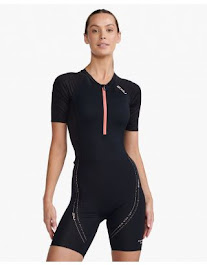Wetsuits Advice for First-Timers
Many triathletes wait until they have completed a few races before investing in their first wetsuit. After all, you want to be sure you enjoy the activity before investing heavily in it, and it's critical to master your triathlon swim technique rather than relying on your wetsuit for buoyancy and speed. With bikes, shoes, triathlon suits, and compression shorts all on the buying list, triathlon can be a pricey sport. However, if you plan on competing in numerous races, a wetsuit is a requirement. When you've decided to invest in Orca wetsuits, here's what you can expect from your piece of wetsuit.
If you've never swum in a wetsuit before, take a few practice swims before race day. In the water, you'll feel a slight difference. The neoprene in the wetsuit makes you more floating, and your swimming motion may change.
Wearing the Wetsuit
One of the most difficult parts of the process is getting into your wetsuit. Put it on with care, especially if it's one of the newest ultra-thin and form-fitting types. Even when brand new, these suits can tear if they catch a toenail or a fingertip accidentally. Make sure you just pull with the pads of your fingers, not your nails, to avoid an expensive repair. To avoid tearing your toenails, place the sacks over your feet before slipping on the suit. Make sure the Volare wetsuit is completely dry before putting it on.
Before putting on your wetsuit, make sure you're completely dry. Skin that is wet will stick to the inside of the suit, making it more difficult to put on.
Apply lubricant to the collar, armholes, and footholes, in particular. Chafing will be prevented as a result of this. Bodyglide, a wetsuit-specific lubricant, is recommended by most suitmakers. Many triathletes swear by PAM cooking spray, which is a less expensive alternative. Make sure whatever you use is water-based. Petroleum-based lubricants might wear down your outfit over time.
You'll want to get out of the suit as soon as possible after finishing the swim leg. Grab the zipper and unzip your suit as soon as you exit the water.
Once you've reached your transition region, take out your arms, allowing only your legs to pull you through. Don't worry if your first attempt in the heat of the race. It's an acquired ability, but after a few tries, you'll get the hang of it.
Visit Website




Comments
Post a Comment